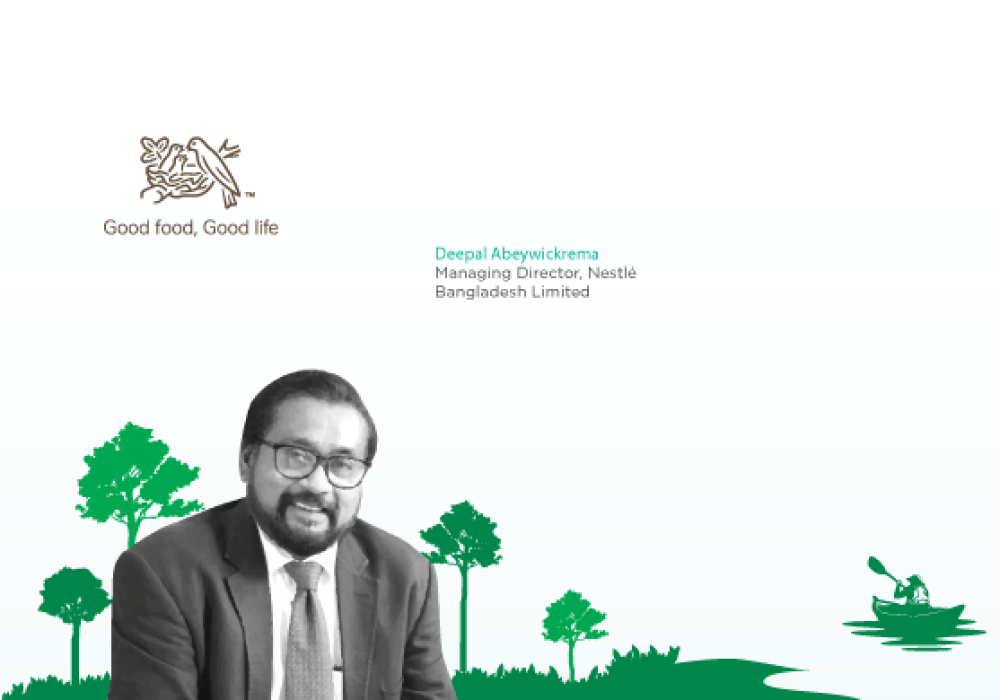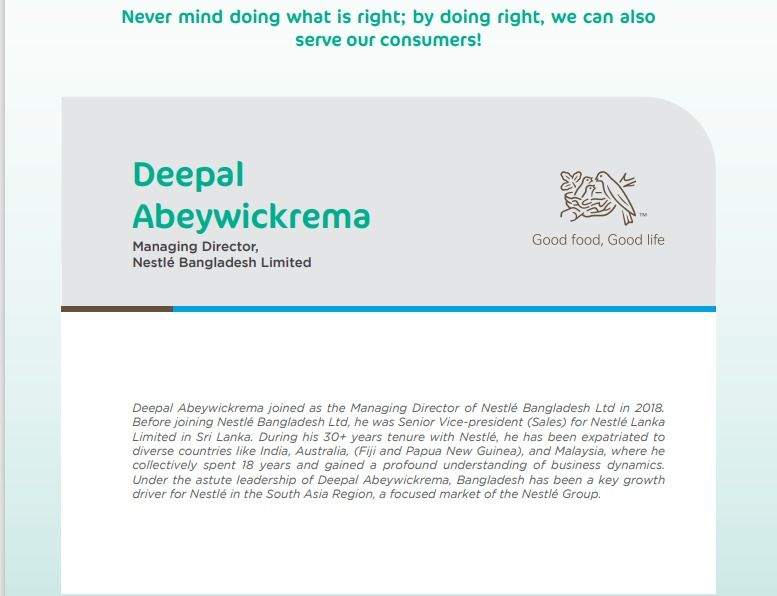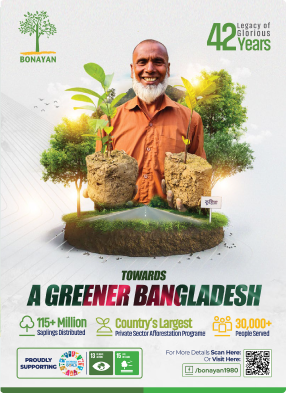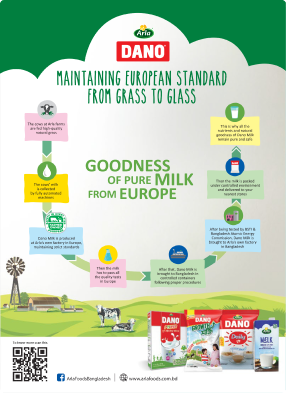- info@ficci.org.bd
- |
- +880248814801, +880248814802
- Contact Us
- |
- Become a Member
- |
- |
- |
- |
- |

"UNICEF estimates that by 2040, almost 600 million children globally are projected to be living in areas of extremely high-water stress."
A planet no more friendly for next generation
For centuries, we only kept measuring how much we progressed by the infrastructures we made for comfortable living, the miles we traveled at ease, and the assets we left behind for our children. Today, our warm fireplace no longer protects us from excessive cold, or our air cooler is tiring itself to cool down the rising temperature outside. We are no more confident that we can pass down the comfort we built for ourselves to our children because climate change has become a direct threat to survival. All of it is at the cost of mother nature, whom we have ignored for a more extended period.
UNICEF's 2019 report, Environment Fit for Children, states that climate change directly threatens a child's ability to survive, grow, and thrive. Water scarcity, natural disasters including flash flooding, cyclones, etc., heat waves, and extreme weather destroy infrastructure critical to the next generation's well-being. Every time we face a natural disaster, be it a cyclone or flood, adverse health impact on the affected population remains relatively high as access to sanitation facilities remains a challenge. Especially in this part of the world, the rescue operation remains highly focused on safe emergency dislocation of disaster-prone people, vastly ignoring the other well-being factor like mental health, access to sanitation facilities, and nutritious food
The strain on environment and what must be done
The gravity of environmental degradation sees no borders, impacting the young and the old, urban and rural areas. Our environment is not 'inexhaustible.' Instead, it indicates that it can no longer sustain human life forms if we continue to live and grow like this, ignoring environmental issues. Thus, businesses can no longer argue that sustainability is not a part of their businesses. Our approaches must be as such that sustainability remains a core business principle.
Although it is easier said, considering the growth and lifestyle achieved by the human race with the company of economic growth, addressing sustainability in business has become more complex than ever. Each business has to do much homework to set up an end-to-end policy where a company's environmental impact remains minimal, or ideally, the carbon emission becomes zero. Businesses cannot do it alone. The strength

and expertise of governments, NGOs and academia, multilateral agencies, and the private sector must be blended and combined to address this global challenge. An all-united comprehensive action plan and a holistic approach toward sustainability are required.
Most importantly, it must be a part of the vision of the business; sustainability must be a purpose. All can agree that companies are, at the end of the day, sales organizations. Thus, the obligation is more on them to innovate and make ground so that profit and the planet both can live in harmony. Organizations can think of the triple bottom line, which refers to how a company's actions impact profit, people, and the planet. With this framework in mind, a sustainable business strategy can be developed that's also profitable. It is time for organizations to sit down and scrutiny the operations of each function within the business, make changes to reduce carbon footprint, and, if required, take bold steps while doing so.
"In a recent McKinsey survey, 70 percent of respondents said their companies have a formal governance of sustainability in place.
It is also vital to create a monitoring framework to regularly assess the progress of the environmental goals and their impact on the environment and community. The more frequently it is done, the better. That will give the organization the safety net of not overlooking any opportunity or learning that can help the organization become more sustainable.
Time to focus on what is important
Climate change is a vast chapter, and to effectuate sustainability, we need to re-adjust our focus. For a long time, we only considered planting trees and thought it was enough. Well, we already know it is not. Our operations must be cleaner, and the focus should be on reducing GHG emissions, using more renewable energy, improving environmental processes, and using fewer natural resources for production. We must pioneer alternative materials to shape a waste-free future and drive responsible behavior. Better waste management systems can address the issues of plastic waste entering the natural environment and impacting the ecosystems. We cannot keep producing materials remaining in our nature for hundreds of years. So, we must modify our designs to be more responsible for the end life of plastic materials. Active role of relevant Govt agencies, and a conducive EPR guideline can guide businesses on this. And MNCs with their global best practices can also come up and share what is beneficial so that it can multiply and create a positive impact on the environment.
For years, globalization was a gift, but now the focus is shifting towards localization. If we have to reduce GHG emissions in production, we must focus more on procuring our raw materials from where we operate. Sustainable sourcing is a need of the hour. Our supply chain must be resilient and more focused on developing local farmers and suppliers to reduce pressure on imports. Farmers and suppliers must also be supported with training and capability enhancement if required in this development process.
The consumer has a role to play
Awareness and education are the key areas here to inform consumers more about coming forward to create a cleaner, greener future. Consumers are putting more and more emphasis on environmental stewardship and transparency. Thus, embedding environmental sustainability would also require the support of consumers.
According to a recent Deloitte Survey, climate change continues to be a top concern for Gen Z and millennials, investing in environmentally sustainable choices and emphasizing the need for urgent climate action
So, this loop is not closed until consumers join hands with businesses and support the efforts and vision of companies to grow, keeping the environment's well-being at the center.
The moral obligation of a consumers-facing organization like Nestle
Regardless of who we are, where we live, and what we do, we all have a moral obligation towards each other, our future generation, and other species to sustain the planet. Thus, we believe businesses and organizations must adopt a well-rounded approach toward sustainability, considering everything.
For more than 150 years, Nestlé has thrived as a business pushing the boundaries of progress. As the world's largest food and beverage company, Nestlé is going beyond its commitment and specifying plans to achieve zero carbon emission by 2050 and halve it by 2025. Under this flagship of Roadmap to Net Zero, we have considered our sourcing, operations, and, most notably, our advocacy. We've taken this same approach with a bold plan that reflects our deep commitment to helping address climate change. Nestlé takes a comprehensive approach to our products and business to measure our impact, and we aren't stopping there. Now, we're considering our suppliers' impact and scouring our business ecosystem to see where and how we can drive equitable change
Challenges: Infrastructure and cost
Businesses know what they have to do and, to some extent, how they do it. But some roadblocks also need be address while implementing the approaches. The absence of infrastructure remains a big challenge for a country like Bangladesh. Infrastructure challenges constantly threaten ideas and visions about recycling plastic materials or renewable energy.
Also, there will be significant transition costs, as the first unit of new and improved climate-friendly solutions are more expensive than the last unit of what is currently in place. But waiting until prices come down will result in no action. It will be a vicious cycle that prevents new technologies from scaling up. Every industry faces this challenge today, and if it is not solved, businesses will fail to address climate change. Thus, Businesses must look at the cost transition differently. For example, the costs of seeking greenhouse-gas neutrality are no different than other types of forward-looking expenditures, such as R&D spending. Businesses cannot sustain without R&D, and this planet cannot sustain if we keep emitting GHG like we are now. So, the size of spend can be carefully calibrated and shifted toward climate work without hurting near-term profits. The balance will be tricky, but now digitalization offers significant efficiency improvements to almost every business on the planet, which means new ways to power progress
Roadmap to Net Zero: Nestle Bangladesh's Saga
Accepting the challenges we have in Bangladesh but never making it an excuse, Nestlé has also designed and implemented a Roadmap to Net Zero aligning with Global Roadmap. Our key focus is reducing carbon emissions as a market on every operational level. We are also progressing towards reducing virgin plastic to one-third and 100% Re-cyclable/Re-usable packaging by 2025.
Nestlé Bangladesh also extensively focuses on sustainable sourcing of raw materials like rice, wheat, and spices to reduce the carbon footprint. We do not compromise on the stringent quality of our while doing so. Thus, we have trained more than 500 farmers in Dinajpur with expert agronomists, enhancing their skills and employability with advanced scientific knowledge on cultivation. This project has also been recognized in the CSR forum of the country, bringing home the 'Best CSR project for Community Engagement 2021', organized by The Daily Star and CSR Window.
Nestlé Bangladesh's Sreepur factory is also one of the leading manufacturing sites in Bangladesh to achieve 'zero liquid discharge’. Addressing SDG no. 12, 'Responsible Consumption and Production’, every year, we religiously bring down the amount of water used in producing our products by innovations in operations and technology in our factory. As a manufacturing site, we do not expel wastewater from our production to the environment; instead, we purify it again and use it in other non-food production operations to protect the environment from the harmful effect of industrial waste So, as you can tell, Nestlé takes CSV and environmental issues as core business principles, and we strive to meet our global and market commitment to improve our nutrition profile and tackle climate actions.
Concluding Remarks
The good news is that we see businesses coming up to tackle climate change. It wasn't on our plate for so long, but now a time is emerging. Now everyone should focus on the 'implementation' and 'execution' of the many eco-friendly practices. No one can prosper alone, and business depends on a thriving society and planet. By changing ourselves, modifying human behaviors, staying aware and alert, embedding sustainable practices within organizations, and adopting innovative technologies, we can take essential steps to stitch a better future and leave behind a world worthy of future generations
The crux of this business case is never to mind the moral imperative and for a global company like ours to go all in on climate change. Doing right by the planet will ultimately mean that Nestlé will serve our consumers, suppliers, communities worldwide, and the Earth itself.






